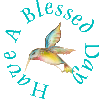There are two small airports on the island: the main one is Melville Hall Airport (DOM), about one hour away from Roseau; the second one is Canefield Airport (DCF) which is about fifteen minutes' travel from Roseau. Neither of them is big enough for typical commercial-size aeroplanes, although Melville Hall is under expansion. As of 2007, American Airlines and LIAT (who recently merged with Caribbean Star, a former competitor in that market) are the major airlines that service the Melville Hall airport, and Carib Aviation operates service from Canefield.
There is no major highway on the island. Before the road was built between Portsmouth and Roseau, people had to take boats, which took several hours. Now, it takes about one hour to drive from Portsmouth to Roseau. Minibus services form the major public transport system. It costs about EC$ 1 to go anywhere in the Portsmouth area and about EC$ 8 from Portsmouth to Roseau (2006). Many visitors opt to rent a 4x4 vehicle so that they can enjoy the freedom to explore on their own schedule.
Education
The island has its own state college, formerly named Clifton Dupigny Community College. Some Dominicans get scholarships from the Cuban government to attend universities in Cuba. Others go to the University of the West Indies or to schools in the United Kingdom, the United States, or other countries for higher education. Ross University, a medical school, is located at Portsmouth. The Archbold Tropical Research and Education Center,[13] a biological field station owned by Clemson University,[14] is located at Springfield Estate between Canefield and Pond Casse. In 2006, another medical school called All Saints University of Medicine opened in temporary facilities in Loubiere, with a permanent campus being constructed in Grand Bay. Currently All Saints is located in Roseau, Dominica
Nature

Dominican rainforest, traveling by aerial tram, from here
Dominica possesses the most pristine wilderness in the Caribbean. Originally, it was protected by sheer mountains which led the European powers to build ports and agricultural settlements on other islands. More recently, the citizens of this island have sought to preserve its spectacular natural beauty by discouraging the type of high-impact tourism which has damaged nature in most of the Caribbean.
Visitors can find large tropical forests, including one which is on the UNESCO list of World Heritage sites, hundreds of streams, spectacular coastlines and coral reefs.
The Sisserou parrot is Dominica's national bird and is indigenous to its mountain forests.
The Caribbean Sea offshore of the island of Dominica is home to many cetaceans. Most notably a group of sperm whales live in this area year round. Other cetaceans commonly seen in the area include spinner dolphins, pantropical spotted dolphins and bottlenose dolphins. Less commonly seen animals include killer whales, false killer whales, pygmy sperm whales, dwarf sperm whales, Risso's dolphins, common dolphins, Atlantic spotted dolphins, humpback whales and Bryde's whales. This makes Dominica a popular destination for tourists interested in whale-watching.



I have been away from the blogs a long time, but have just seen your site today. You Discover Dominica posts are great. I will show them to the children. Unfortunately I feel that I can't keep up my blog and won't be able to for I don't know how long. But I have your site marked and will visit you. Debby
ReplyDelete